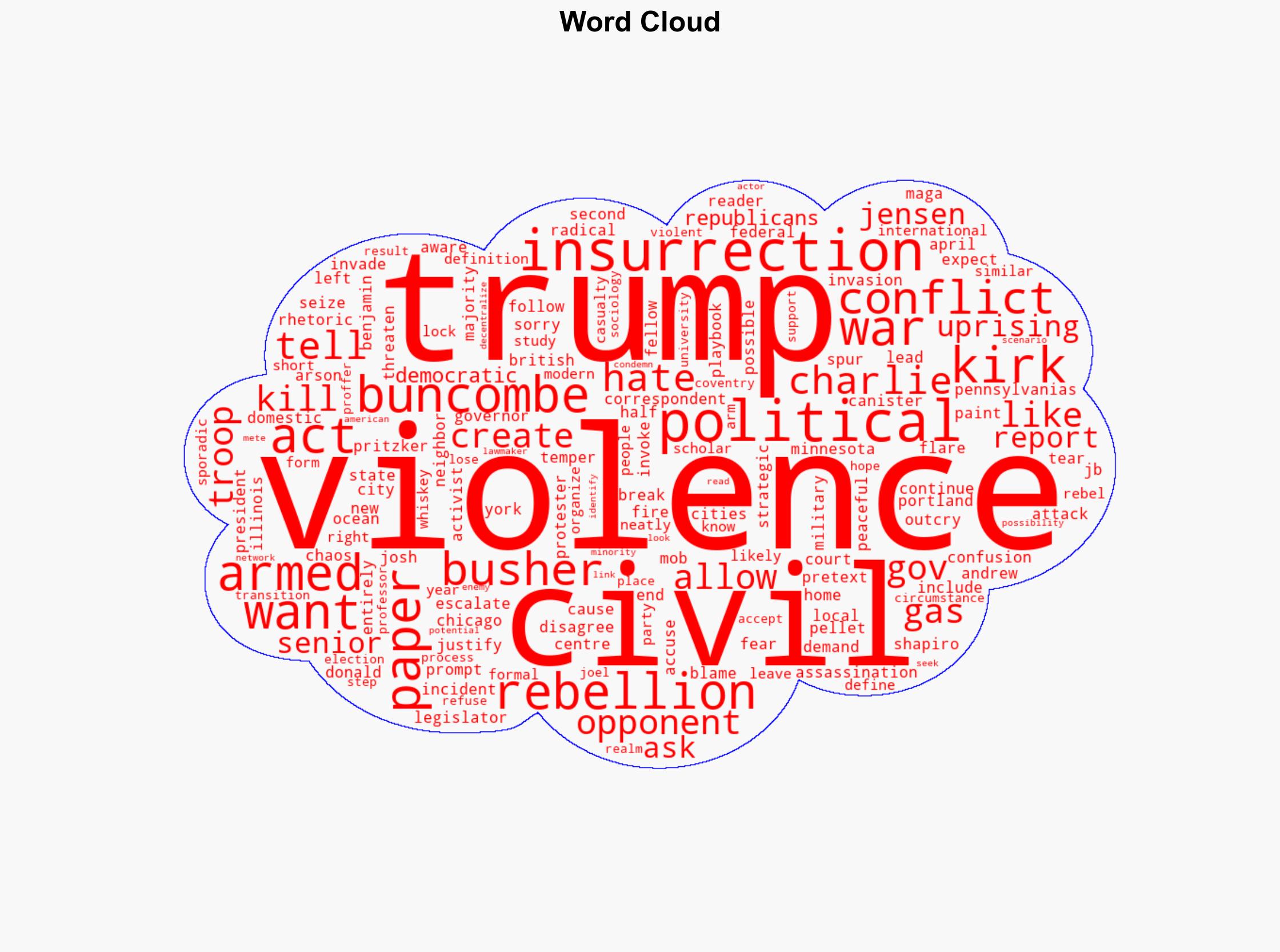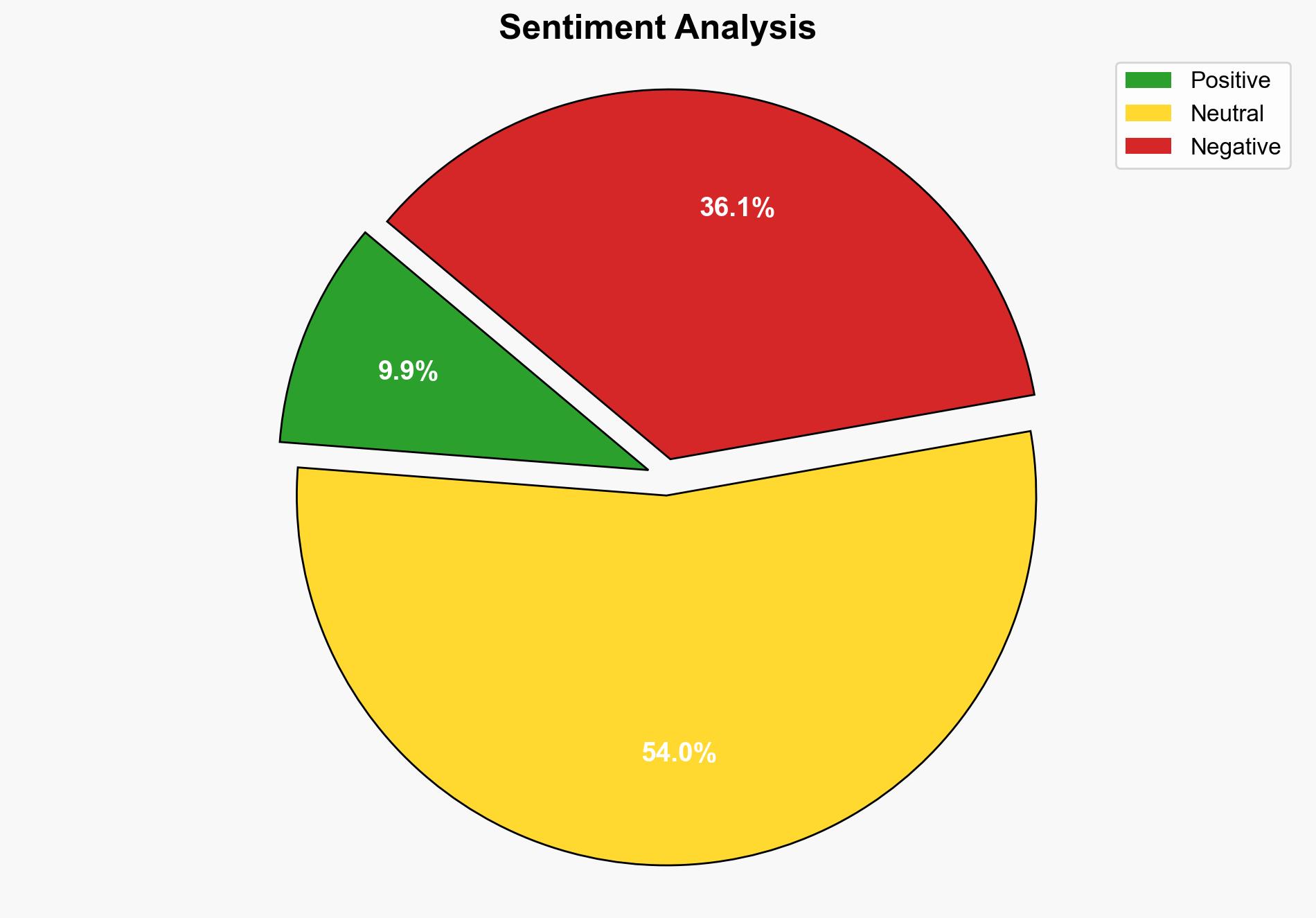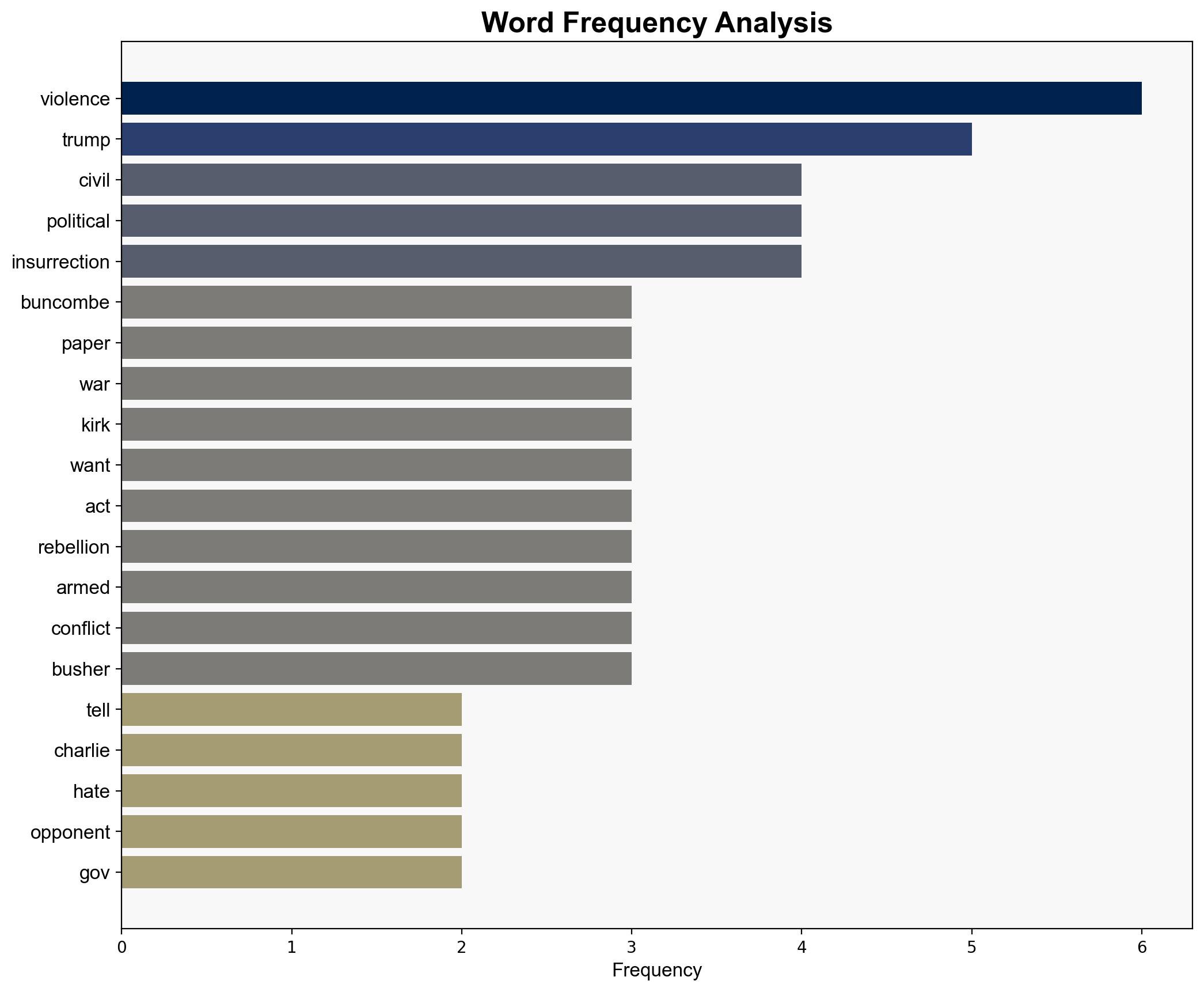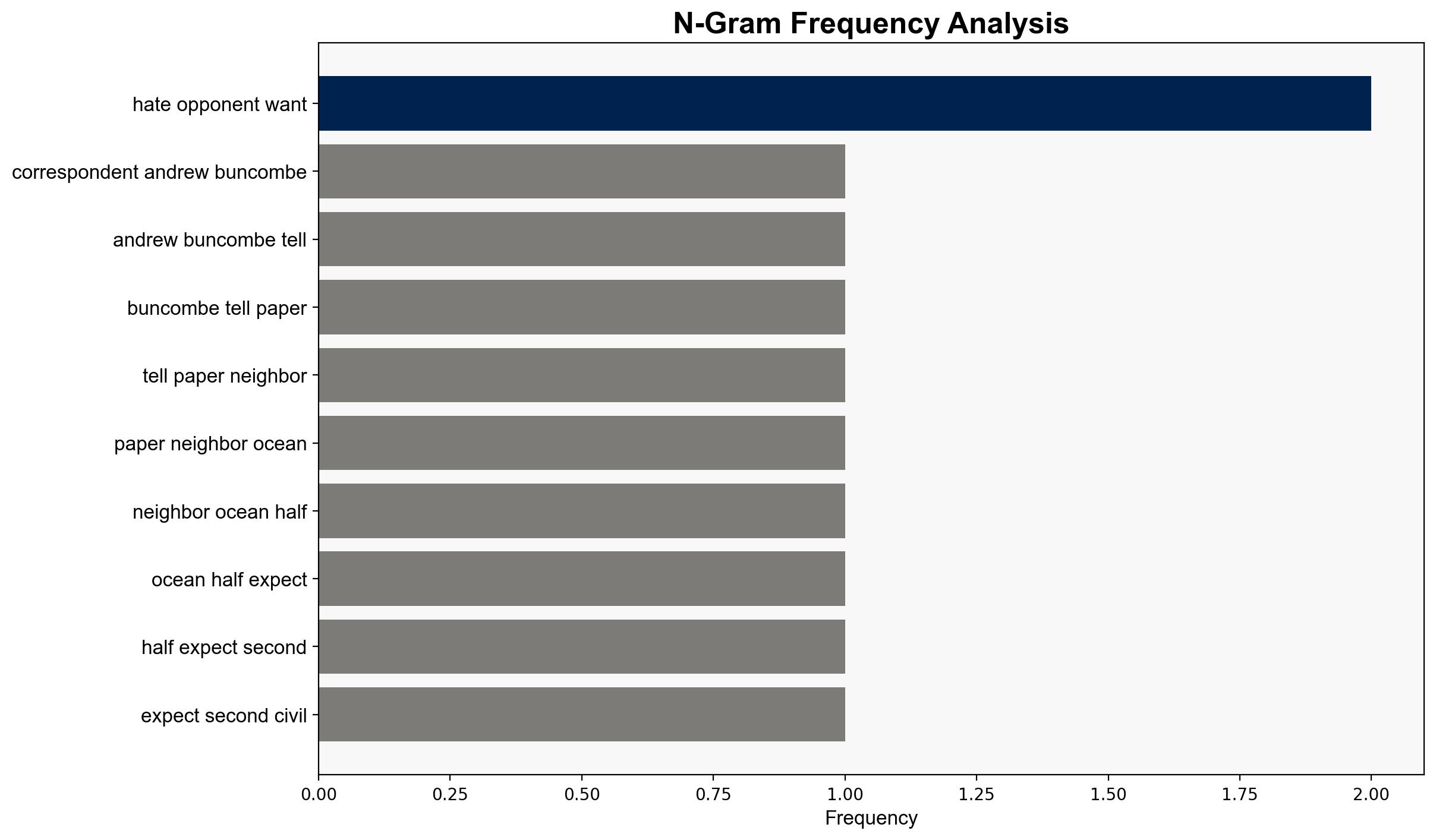Europeans terrified ‘an armed uprising’ is brewing in the US report – Raw Story
Published on: 2025-10-22
Intelligence Report: Europeans terrified ‘an armed uprising’ is brewing in the US report – Raw Story
1. BLUF (Bottom Line Up Front)
There is a moderate confidence level that the current political climate in the US could lead to increased localized violence, but not necessarily a full-scale armed uprising or civil war. The most supported hypothesis suggests sporadic acts of violence driven by political polarization. Recommended action includes enhancing community engagement and monitoring extremist rhetoric to prevent escalation.
2. Competing Hypotheses
Hypothesis 1: The US is on the brink of an armed uprising or civil war, driven by political polarization and rhetoric from influential figures.
– This hypothesis is supported by reports of escalating violence, such as the attack on a Minnesota legislator and arson at the home of Pennsylvania’s governor.
– The rhetoric from figures like Charlie Kirk and responses from Donald Trump are seen as exacerbating tensions.
Hypothesis 2: The current political tensions will result in sporadic acts of violence but will not escalate into a full-scale armed uprising.
– This hypothesis is supported by historical context, such as the Whiskey Rebellion, which involved sporadic violence but did not evolve into a civil war.
– The decentralized nature of potential violent actors suggests a lack of organized capacity for sustained conflict.
3. Key Assumptions and Red Flags
– Assumption: Political rhetoric directly correlates with the likelihood of violence. This may overlook other socio-economic factors.
– Red Flag: The narrative may be influenced by media sensationalism, potentially overstating the threat level.
– Missing Data: Lack of comprehensive data on the organizational capacity of potential violent groups.
4. Implications and Strategic Risks
– Economic: Prolonged unrest could deter investment and disrupt local economies.
– Cyber: Increased political tensions may lead to cyber-attacks on critical infrastructure.
– Geopolitical: International perception of instability could weaken US diplomatic standing.
– Psychological: Public fear and anxiety could be exacerbated by media coverage, leading to further polarization.
5. Recommendations and Outlook
- Enhance intelligence sharing between federal and local agencies to monitor and mitigate potential threats.
- Promote dialogue and community engagement initiatives to bridge political divides.
- Scenario Projections:
- Best Case: De-escalation through effective communication and policy interventions.
- Worst Case: Escalation into widespread violence affecting multiple states.
- Most Likely: Continued sporadic violence with localized impact.
6. Key Individuals and Entities
– Charlie Kirk
– Donald Trump
– JB Pritzker
– Josh Shapiro
7. Thematic Tags
national security threats, cybersecurity, counter-terrorism, regional focus




